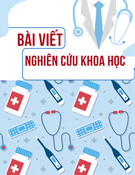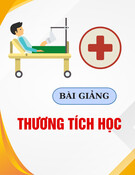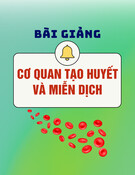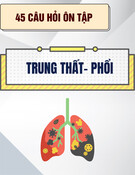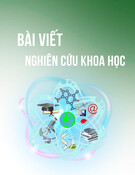
Do Phuong Linh Chi et al
Journal of Health Sciences
DOI: https://doi.org/10.59070/jhs020624005
Volume 2, Issue 6 – 2024
Copyright © 2024 Journal of Health Sciences 31
Medical students on role-play activities - An action research
at a university in Vietnam
Do Phuong Linh Chi1*, Pham Bich Ngoc1
A dynamic classroom is always
something that any instructor is concerned
about. And most of those who have and are
standing in front of the class always try to
find and apply techniques to create interest
but must be effective for students with the
right purpose of the course that the students
are studying. The author of this article is no
exception. Role-play is one of the activities
that the writer frequently applies to students
in speaking skill classes, always receiving
positive responses from the students.
However, in reality, role-play activities
cannot be applied to all student groups and
do not always yield the desired results. In
the first semester (2021-2022), when
mentioning grouping for role-play
activities, the instructor received some
mixed reactions from the students. For
those reasons, this research began to be
undertaken.
The focus of this study is to understand
the evaluation of 30 second-year medical
students in the first semester, lasting 15
weeks (August 2, 2021- November 14,
2022), at Haiphong University of Medicine
and Pharmacy regarding the role-play
activities. The purpose of this research is to
determine whether role-play is truly a
speaking skills practice activity favored by
30 second-year medical students class at
Haiphong University of Medicine and
Pharmacy. Through this, the author will
seek to understand in order to timely update
or change (if necessary) the speaking skills
teaching method to achieve the highest
effectiveness in the following semesters.
LITERATURE REVIEW
Concepts of Role-play
INTRODUCTION
ABSTRACT
Role play is one of a whole gamut of communicative techniques
which develops fluency in language students, which promotes
interaction in the classroom, and which increases motivation.
(Ladousse, 2004, p.7). The purpose of this research is to
describe the evaluation of thirty second- year medical students
at the University in Vietnam on the application of role-play
activities in practicing speaking skill. The Action Research
method was used, and the results obtained from two classroom
observations and surveys from two questionnaires show that
nearly half of the students in the class do not agree with the
application of role-play activities, which is contrary to the
classes that the writer has taught. Also, based on the results
obtained from the research, the main reason leading to a large
number of students not wanting to participate in role-play
activities is due to a lack of balance in terms of skills. Role-play
is due to the lack of balance in students' proficiency levels.
Keywords: Role-play, speaking skill, medical students.
1 Hai Phong University of
Medicine and Pharmacy, Vietnam
* Corresponding author
Do Phuong Linh Chi
Email: dplchi@hpmu.edu.vn
Received: October 20, 2024
Reviewed: October 29, 2024
Accepted: November 13, 2024






